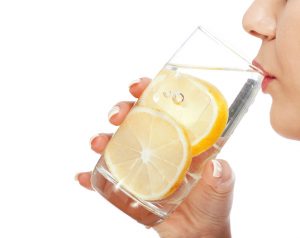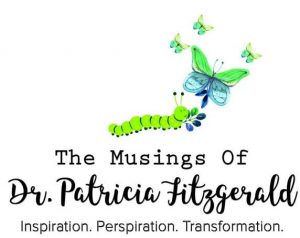You’ve heard it so many times. Drink more water and you will be healthier.
And you want to. In fact, you have every intention of doing so.
You may have purchased a variety of beautiful water bottles to complement your sincere hydration goals. You may have invested in a state-of-the-art water filtration system and/or tried many brands of water, hoping to be inspired to develop the habit of hydrating with ease on a daily basis.
But how many of us manage to stick to our drink-more-water-mantras for the long-term?
It’s a challenge I hear about from my patients every day, which inspired me to start writing down all the various recommendations I have given to patients throughout the years on how to drink more water.
Today’s post, 10 Delicious Ways to Drink More Water (solutions for the well-meaning and forgetful), includes delicious, easy, and healthy ways to end your internal water challenges for good and start reaping the health and beauty benefits of optimal hydration.
What science says about how much water you should drink may surprise you
When it comes to water and the human body, scientists agree on the following:
- The human body is made up of 80-85% water.
- A human being can survive only 3 days without water.
- Like air and food, we literally can’t live without it.
But, the question of how much water a person should drink daily is still very much unproven.
You’ve heard the recommendations, 8 glasses per day, drink half your weight in ounces, drink until your urine is clear…
I wish I could show you the science behind these recommendations, but guess what? I can’t!
No study or scientist has proven the optimal amount of water for human beings to consume daily.
We all live in different climates, have different body compositions, eat different diets with varying amounts of salt, diuretics, alcohol, and water-containing foods; we all exercise different amounts and perspire at different rates, and medications and illness also play a role in our hydration levels.
Given the individuality of humans and our environments, it’s no wonder science has not been able to come to a conclusion.
If you need a solid number to go on, I’d suggest talking with your practitioner OR experimenting with different amounts of water and listening to your body.
Word to the wise-water enthusiast: as you begin to drink more water, you will have to use the bathroom more often. This will even out as your body adjusts to your new water intake. But until then, plan accordingly.
Proven ways water can help you stay healthier
Despite the fact science can’t tell us how much to drink, it has proven the following health benefits of drinking more water.
- Drinking more water supports healthy weight and weight-loss—studies have proven that adequate water helps your stomach feel full and satisfied so you eat less 1.
Test it out for yourself the next time you get the munchies: drink a glass of water before chowing down and wait 10 or 15 minutes to see if it satiates your hunger.
Along this same theme, another study reported by ABC news2, proved that people who consume a brothy soup before a meal eat 20% less than those who do not.
The principle is the same, take liquid first and you’ll eat a smaller meal.
- Water keeps your bowels functioning optimally—the colon relies on water to help it move efficiently and comfortably. When not enough fluid is present, constipation and hard, dry, painful stools result.
This is why many fiber supplements, such as psyllium, should be taken with water. The two work hand-in-hand to sweep and flush out waste.
- Water helps improve brain and cognitive function—studies have shown that just a 2% rate of dehydration can lead to cognitive impairments including reduced memory and attention3.
- Maintains normal fluid balance—which improves circulation, digestion, absorption, creation of saliva, nutrient transport, muscle health, and body temperature.
- Boosts your body’s detoxification by supporting healthy kidneys—the kidneys are key organs of elimination, but cannot function properly without enough water.
In Traditional Chinese Medicine the kidneys are associated with the Water element; and have a direct relationship to the health of the bones, organs of fertility, hair, and ears.
- Water helps maintain normal blood pressure and promotes alertness—the relationship between hypertension and chronic dehydration has been long-known. But researchers at Vanderbilt University found that plain old water increases the activity of the sympathetic nervous system which helps promote alertness and greater focus4.
So, water is important! Now onto the 10 delicious ways to get more of it…
1. Bored with plain water? Just add fruit.
This is an old trick spas used to encourage patrons to hydrate after massages.
You can buy fruit-infused water, OR just add a few slices of fresh, organic fruit, vegetables, or herbs to room temperature water.
The natural flavors infuse within minutes, and you can enjoy a spa-like experience anywhere you go.
Once you find your favorite combo the stuff is deliciously addictive.

Need some inspiration? Here are some ideas to try:
- Strawberry, orange, and lime
- Lemon and a sprig of fresh rosemary
- Peaches with plums or raspberries
- Cucumber, orange, and mint
- Peeled grapefruit (the rind is too bitter), or orange (peel on) with fresh basil
- Raspberry with lemon or lime
- Watermelon, cucumber and mint
- If you can find chocolate mint at your farmer’s market, it is lovely paired with raspberries or orange.
2. Craving something sweet? Try this nearly zero-calorie, no-sugar-added, naturally-sweetened lemonade.
This is one my favorite ways to drink more water and it take no time to make.
Homemade Stevia Lemonade or Limeade
Yield: 1 Quart
Ingredients:
Juice of 4-6 lemons or limes (depending on size and your desired tartness)
3-6 packets (to taste) pure Stevia or Stevia with inulin such a SweetLeaf® (the stevia dissolves perfectly in room temperature water)
4 cups purified water
Procedure:
Mix, shake, and enjoy.
3. Can’t remember to drink enough? There’s an app for that.
Try Waterlogged for iPhone, Water Your Body for Android, or set alarms on your phone or computer.
4. Start your day off hydrated.

Many patients report how they “know they should drink more water.” There is something in them that knows intuitively, yet they also report how they feel the day escapes them and they often realize later how little water they drank. That was also the case for me many years ago. I realized that by developing the habit of drinking a 12 oz glass of water (I squeeze half a lemon that I pick from my own lemon tree) first thing every morning, my awareness of hydration continues throughout the day. That tip seems to the the single most useful that I’ve shared with thousands of patients for almost three decades in terms of “converting” the forgetful to the hydrated.
Color your world of hydration with other foods and fluids that count toward your water intake, such as:
5. Pure coconut water
Known as nature’s sport’s drink, coconut water has been sustaining people for centuries. There are many brands out there, my favorite for both purity and taste is Harmless Harvest Raw Coconut Water.
6. Water with a splash of juice
For many years, consumers had been led to believe that 100% fruit juice was a healthy beverage. Experts now agree this is not the case. However, if you’re used to drinking juice it can be hard to give up that flavor for plain old water.
To ease the transition, try diluting your juice. Start with half water, half juice, and slowly reduce the amount of juice. This gives your water some flavor without all the added sugar.
7. Broths
Why are steamy hot broths consumed at breakfast, lunch, and dinner in some of the world’s most sweltering countries?
In addition to being incredibly nourishing, they are also mostly water. Plus, as the theory goes, when you take hot liquids they makes you perspire, which ultimately cools you off.
8. Enjoy and Explore the Amazing Variety of Teas
A warm cup of energizing herbal or green tea counts toward your daily water intake, and can have a positive effect on your overall health.
For a natural pick-me-up, try Tulsi; for a fruity flavor that pairs well with citrus, hibiscus hits the spot, if you like a more smokey, woodsy tea, Yerba Mate blends or nettles are the way to go; if you prefer black tea, red raspberry leaf has a similar tannic flavor and is a wonderful tonic for women.
9. Coffee substitutes
A cup or two of coffee is fine for most people and has proven health benefits5.
But, if you end up drinking glass after glass of iced coffee and blended coffee drinks to keep cool, all that stimulating caffeine and sugar can negatively impact your health.
Chicory, roasted dandelion blends, or Teeccino® all offer delicious, nutritious coffee flavor without the caffeine jitters.
10. The low-sugar “Arnold Palmer”
Mix half of your stevia-sweetened lemonade with half iced red raspberry leaf or green tea, for a refreshing, hydrating pick-me-up.
In addition to these delicious ways to get more water, technology can be a big help here. Try setting reminders on your phone and other devices, or use a fitness tracker like FitBit® or Jawbone® to help you remember to sip water throughout the day.
When it comes to how to get enough water, creativity, consistency, and reminders are key. I hope these 10 tips have inspired you to start reaping the benefits of optimal hydration for health, beauty, and beyond.
-Dr. Patricia
References:










